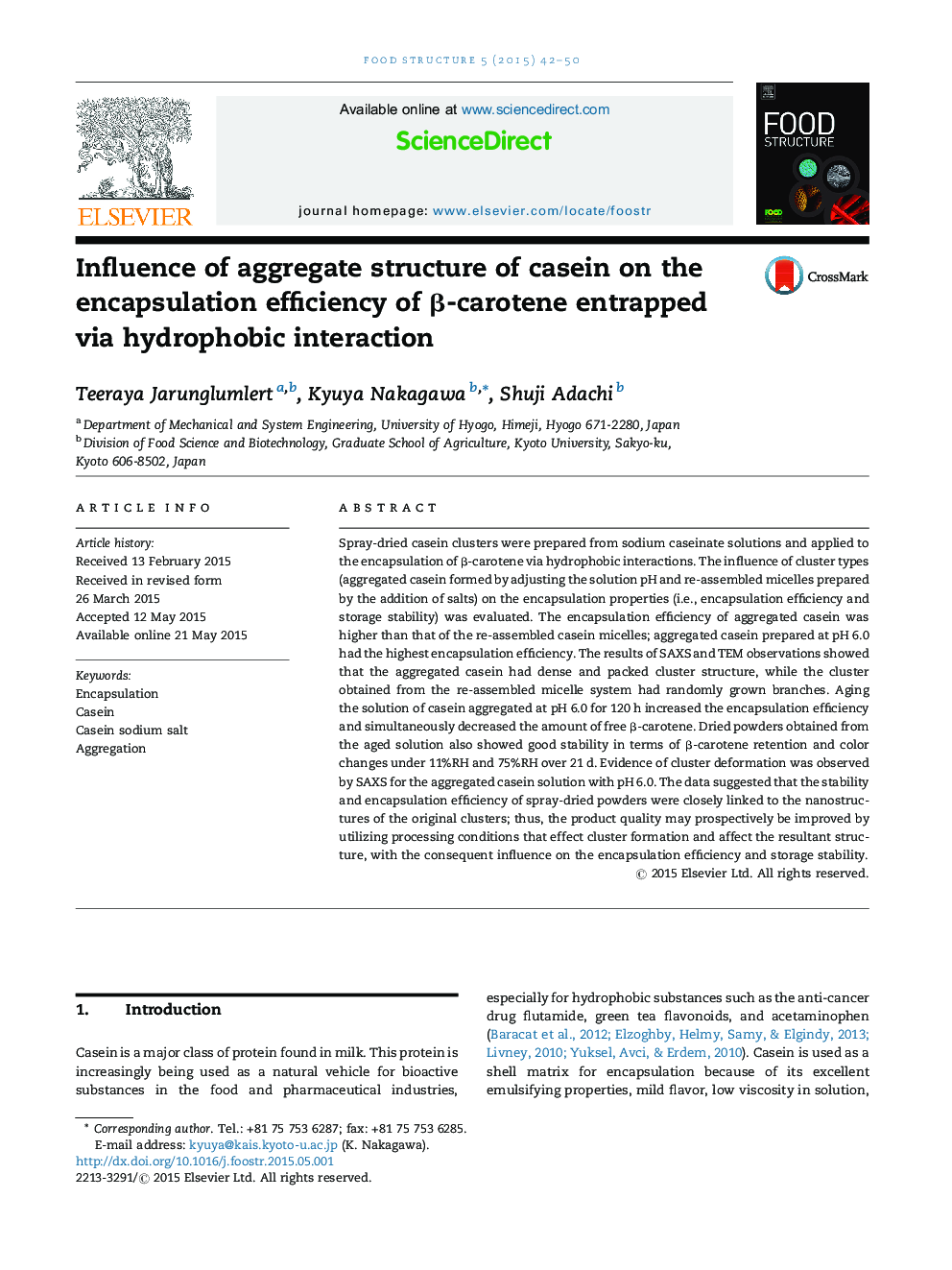| Article ID | Journal | Published Year | Pages | File Type |
|---|---|---|---|---|
| 19913 | Food Structure | 2015 | 9 Pages |
•Spray-dried casein clusters that encapsulated β-carotene were prepared from sodium caseinate solution.•The encapsulation properties were strongly dependent on the type of casein cluster.•Aggregated casein formed by adjusting the pH of the solution to 6.0 gave good encapsulation efficiency.•Aging step before drying improved stabilities of the dried powders under 11%RH and 75%RH over 21 d.•SAXS measurement clarified that the nano-structures of the casein cluster changed during the aging step.
Spray-dried casein clusters were prepared from sodium caseinate solutions and applied to the encapsulation of β-carotene via hydrophobic interactions. The influence of cluster types (aggregated casein formed by adjusting the solution pH and re-assembled micelles prepared by the addition of salts) on the encapsulation properties (i.e., encapsulation efficiency and storage stability) was evaluated. The encapsulation efficiency of aggregated casein was higher than that of the re-assembled casein micelles; aggregated casein prepared at pH 6.0 had the highest encapsulation efficiency. The results of SAXS and TEM observations showed that the aggregated casein had dense and packed cluster structure, while the cluster obtained from the re-assembled micelle system had randomly grown branches. Aging the solution of casein aggregated at pH 6.0 for 120 h increased the encapsulation efficiency and simultaneously decreased the amount of free β-carotene. Dried powders obtained from the aged solution also showed good stability in terms of β-carotene retention and color changes under 11%RH and 75%RH over 21 d. Evidence of cluster deformation was observed by SAXS for the aggregated casein solution with pH 6.0. The data suggested that the stability and encapsulation efficiency of spray-dried powders were closely linked to the nanostructures of the original clusters; thus, the product quality may prospectively be improved by utilizing processing conditions that effect cluster formation and affect the resultant structure, with the consequent influence on the encapsulation efficiency and storage stability.
Graphical abstractFigure optionsDownload full-size imageDownload as PowerPoint slide
